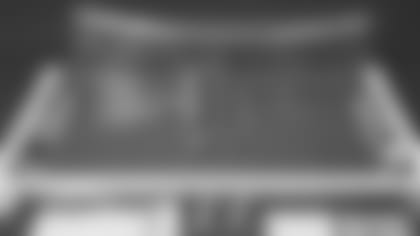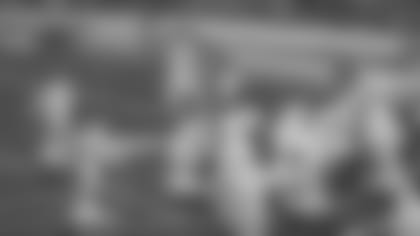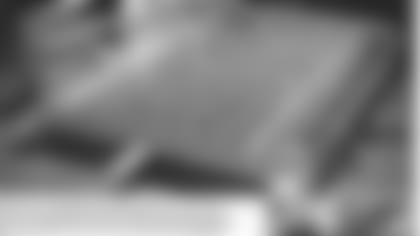Are you getting a tad fatigued by Madden 13, Madden 12, Madden NFL 25? Looking for something less complicated? More retro?
Something to give you a little buzz?
Switch to electric football for a while.
Tudor Electric Football games actually haven't gone away for a long time — versions have been on the market since 1949 — although they slipped under the playthings radar for a while. If you had a football game that had no computer, no monitor, no joysticks and made a loud metallic buzzing sound every time you ran a play, by the late Eighties you might have succumbed to the Madden craze and slid that half-yard-square sheet metal on its stubby plastic legs back under your bed for an extended stay.
But as Earl Shores told me recently, it's time to take another look and listen at electric football.
"I'm fortunate enough to be a part of Tudor's toy fair," he said. "The games have been updated, more streamlined, battery-operated, lighter, not as loud. They've made some changes, redesigned all the games. The buyers' reaction at this year's toy fair was very positive."

Shores knows everything there is to know about electric football, and I mean that almost literally. **He has written a 650-page book, "The Unforgettable Buzz,"** with Roddy Garcia, that could qualify as a college textbook on the subject, It's crammed with interviews with the gamemakers themselves, the ins and outs of product development and pricing, sidebars on toys and football in America that helped shape and sustain these games, and plenty of photos, illustrations and press releases to break up the text.
I wanted to chat with Earl because many years ago, I had my own Tudor game. I lined up my 11 red players against my dad's 11 yellow players and tried to find strategies to buzz my ballcarrier into the open field. I puzzled over the players whose bases and blades made them run in circles. I practiced to flick a felt football out of the arm on my TTQB (Triple Threat Quarterback) and hit a receiver a foot "downfield." (That's how you completed a pass.)
Sounds primitive, eh? But as Shores recalls, that wasn't the point.
"We used our imaginations quite a bit back then," he said. "I wanted to see the NFL on my bedroom floor, so I wanted to see electric football, whether my players ran in circles or not. If you thought it was dumb and stupid, that's what you thought. But they really captured something making the stadiums and the players and the games."
There's another reason for this story, though. As Earl underscored, "The Jets were intimately involved with electric football and its growth, no doubt about it."

For instance, the likeness of an in-uniform Al Dorow, the Titans quarterback for the first two seasons of our franchise's existence, dominated a 1961 print ad that ran in Sports Illustrated and other publications just days after he led the Navy & Gold to their Thanksgiving win over the Bills.
Then came the "stadium phase" of the games for Tudor and its several competitors.
"The company that actually had the NFL license at that time, Gotham Steel, came out with a game that was set in a stadium that looked almost exactly like Shea Stadium," Shores said, alluding to the no-longer-standing ballpark that enticed the rechristened Jets to leave the Polo Grounds in 1964. "The company was located in the Bronx, so there's really not much question that Gotham was influenced by the new stadium that had gone up in Queens.
"I would also argue that '65 was when the Jets drafted Joe Namath, and that probably convinced Gotham, 'We should tap into what's going on over there.' "
Perhaps not surprisingly, Namath appeared on the cover of Gotham's 1969 game box and on the lithographed metal passing figure inside in the first player-endorsed electric football game ever produced.

Yet in 1967 Tudor wrested the NFL license away from Gotham and, among many developments, manufactured two big Jets-influenced editions — a 1969 Super Bowl model, complete with Jets figures in their white uniforms and the Colts in their blue from Super Bowl III, and a '71 AFC model, recreating the first Monday Night Football game in '70 between the Jets, now in green, and the Browns, in white.
As with any hobby, you can probably find these and all other models online, join an electric football chatroom, and attend a convention.
And regardless of age, you can compete against like-minded people on the metal playing fields again.
"It seems like they're sensing they'll have a marketplace for the younger audience," Shores said. "They've even put new bases on the old players that let them run around the field. As an old guy myself, I'm excited."
That's what the buzz does.







